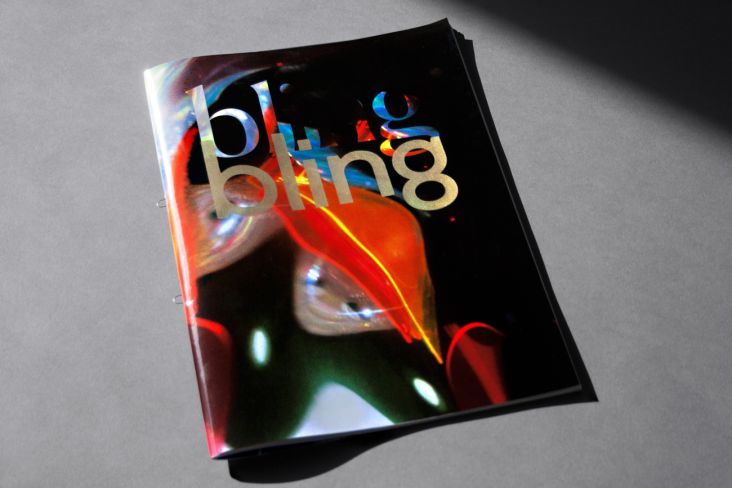How to blog when you've hit a wall and run out of creative ideas
A few months ago, you started your first blog. It was all so exciting. The words, the thoughts, the ideas, kept spilling out of you. You couldn’t wait to get it all up on the website and see your followers liking and commenting on your great posts.
](https://www.creativeboom.com/upload/articles/f5/f53946a7aa1cb8a87d2b613f09ed0e7cfb7d6949_1280.jpeg)
Image courtesy of Adobe Stock
Then suddenly – the wall.
It happens to every creative in every field. Rock bands refer knowingly to that “difficult second album”. Once-prolific novelists go into hiding from their publishers. Scriptwriters on season eight of a popular show start to fantasise about killing off all the main characters.
And so it is with blogging.
One week, the inspiration can’t keep coming, and you’re struggling to sleep at night as idea after idea pops into your head. The next week - nothing.
If that’s happening to you, don’t worry: we’ve all been there. The following tried-and-tested strategies will help you get back in the blogging business.
In the meantime, if you want any further help on starting a website or finding the right Wordpress hosting once you're up and running, DesignBombs.com offers some solid advice, along with some pretty awesome deals to help keep costs down.
1. Close your laptop and open your notebook
When the idea-generating parts of your brain seize up, there’s nothing more unproductive than staring at a blank screen and waiting for inspiration to strike.
So close your laptop, pick up your notebook, and head to somewhere that you don’t usually write your blog: a park, a cafe, the top of a tall building – anywhere that will help give you a sense of new perspective.
Now give yourself a time limit (say 15 minutes) and challenge yourself to write down 50 ideas for posts. That’s right, not one, not five, but 50. It's a brainstorming session, so they don’t have to be good ideas, and there’s no such thing as a bad idea. A good way to start is to write down some purposely, terrible ideas that you can laugh about later.
The important thing is to get 50 ideas down in the time available, so there’s no time to waste: you have an average of 12 seconds per idea, so you have to write down whatever comes into your mind.
The point of this trick is that pressure forces our brains to work much more creatively than usual, so amongst the daft ideas, you’ll almost certainly find a couple of beauties, or at least the germ of an idea that can be developed into something that will work.
2. Create a system
Another way to apply the pressure your brain needs to get creative again is to restrict the scope of what you blog about.
It’s incredibly liberating that you can write about anything you like on your blog, but sometimes that very freedom can be overwhelming, and you don’t know where to start. So it can help to come up with a list of categories for your blog posts, and stick to them rigidly. They could include, for example: book review; comparison post (eg Photoshop vs Sketch); how-to post; quiz; open letter (eg Dear Google....); personal anecdote; opinion piece and so forth.
If you’re struggling to come up with categories, check out other blogs you admire and how they categorise their posts. And if they don’t, scan through them and ‘reverse-engineer’ their categories yourself.
Now you’ve got your categories laid out, challenge yourself to think of three posts for each category. You should find that, by narrowing down the options in your brain so carefully, it will be much easier to generate ideas.
3. Read a lot
One of the best ways to find inspiration for new blog topics is to read as widely as possible about your chosen subject. That doesn’t mean copying other people’s ideas. Still, it does mean that the more knowledge, opinions and information you can pull in, the more your brain will be able to fuse them to find a new and different angle on the subject.
So let’s say you blog about typography, and currently read ten type-related blogs regularly. If you’re struggling for ideas, the most straightforward answer would be to add ten more to the list. If you don’t know where to find them, then search for “best typography blogs” and the internet will be sure to provide a ton of list articles to help you out.
4. Forums and social media
Blog posts aren’t the only place to find information and inspiration about your chosen subject, of course. Some of the most compelling ideas and most lively debate can often be found in the more ‘Wild West’ sections of the internet.
So as well as your more formal reading schedule, make a regular of checking the appropriate subreddit on reddit.org, comments on relevant Amazon book reviews, Quora, LinkedIn, Twitter hashtags… And don’t just passively consume what other people have written, but dive in and join the conversation. Which brings us to the following:
5. Ask your audience questions
Asking your audience questions, through your blog posts and social media messages is a great way to build engagement in your blog and start to foster a real community around it. And even more than that, it’s a great way to generate new ideas.
So don’t just blog your own opinion about, say, a rise in Adobe’s pricing: ask your audience, how is this affecting you? Are you passing the cost on to your clients, or swallowing it yourself? Are you considering alternative software? Have you found a smart way of avoiding the price hike? How much do you spend on design software as a proportion of your income? And so on.
If people feel encouraged to express themselves and their opinions, they’ll often come up with new information and unexpected views about a topic that could well be the basis of future blog posts. Also, bear in mind that your blog is not the only place you can ask questions of your audience or least the kind of people who make up your audience. Try visiting similar blogs to your own, and asking questions in the comments sections of their posts as well.
6. Smell what sells
Whether you’re planning on Buzzfeed-style world domination or your blog is just a fun hobby, ultimately we all want people to read and like the words we write. And helpfully, there are a significant number of free tools to help us find which of our posts are getting the most attention.
In terms of measuring page views, the best place to start is Google Analytics, which is a free and easy to use service provided by Google that gives you all sorts of information about which posts people are clicking on and how long they’re spending reading them. If it’s social engagement you’re more interested in, start with Buzzsumo, which reveals which content is getting shared and commented on most; both on your site and competitors’.
Once you know what’s working best, that will give you plenty of ideas about the kind of content your audience is most interested in, and from there, idea generation will become a cinch.
7. Reveal something about yourself
Traditional publishers of newspapers and magazines have poured money into making that content work online. But often they’ve floundered because there’s a big difference between a website and a blog. And one of the big differences is the latter’s nature.
While big publishers’ tend to dump tons of content online at once and hope people will be interested, the best blogs tend to start small, write with a personal tone of voice, and build up an intimate relationship with their readers over time; bonds which, if created in the right way, are far stronger than those of mathematically ‘more popular’ websites.
So next time you’re struggling for something to write about, maybe it’s time to dig deep into your soul and think about writing personal, something others don’t know about you.
You could reveal something unexpected about your creative process, how your family life informs your work, a crucial moment in your life that inspired you to change careers… anything that’s central to who you are is likely to connect with readers in a powerful way. If you do so honestly and openly, you may find it’s the most popular post you’ve ever written.


























